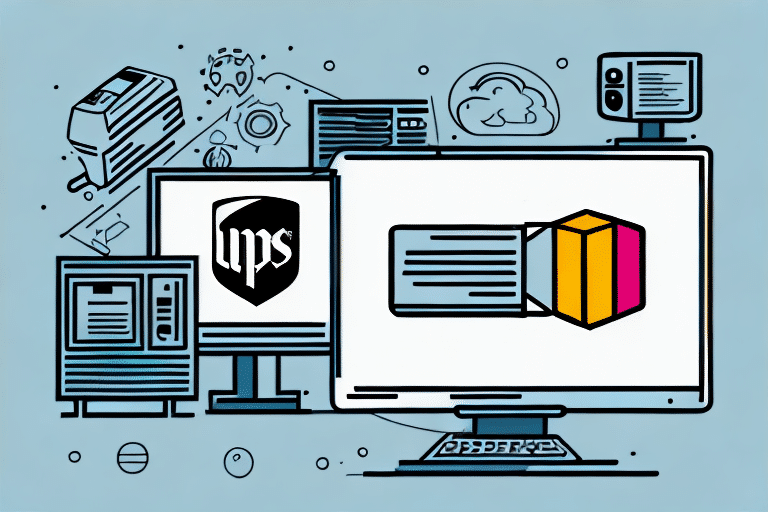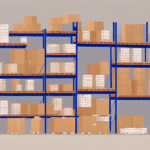Moving Data to a PC with Worldship Installed Using UPS
Transferring data securely to a PC with Worldship already installed can be seamlessly accomplished using UPS services. This guide provides an in-depth analysis of the process, ensuring your data remains safe and intact throughout the transfer.
Why Choose UPS for Data Transfer
Reliability and Security
UPS is renowned for its dependable shipping services, offering secure handling and timely delivery of your data packages. With a robust global network, UPS ensures that your data arrives safely at its intended destination.
Convenience and Tracking
UPS provides user-friendly scheduling options, allowing you to arrange pickups from your location without the need to visit a drop-off point. Additionally, UPS's advanced tracking system lets you monitor your shipment in real-time, offering peace of mind, especially for time-sensitive data transfers.
Requirements for Transferring Data to a PC with Worldship Installed
Software Compatibility
Ensure both the original and destination PCs have the same version of Worldship installed. Using mismatched versions can lead to compatibility issues during data transfer.
Stable Internet Connection
A reliable internet connection is essential to facilitate smooth data transfer processes, especially if any steps require online communication or verification.
Operating System Compatibility
Verify that both computers run compatible operating systems. Differences in OS versions can cause transfer failures or data corruption.
Adequate Storage Space
Confirm that the destination PC has sufficient storage capacity to receive the incoming data. Insufficient space can interrupt the transfer and lead to incomplete data reception.
Preparing Your Data for Transfer Using UPS
Organize and Label Data
Before shipping, categorize your data systematically and clearly label all storage devices. This organization minimizes confusion and streamlines the transfer process upon arrival.
Encrypt Your Data
To enhance security, encrypt your data before transferring. Encryption ensures that your information remains protected even if the physical package is compromised during transit.
Step-by-Step Guide to Transferring Data with UPS
- Locate and Copy Data: On the original PC, identify and copy the data you intend to transfer onto a secure USB flash drive or external hard drive.
- Assess Shipment Details: Measure and weigh your storage device to accurately prepare for shipping logistics.
- Create a UPS Account: Visit UPS.com to create an account or log in to your existing account.
- Select Shipping Service: Choose a UPS shipping option that best fits your data transfer timeline and budget.
- Enter Shipping Information: Input the necessary shipping details, including the destination address and package specifics.
- Print and Attach Label: Generate and print the UPS shipping label, securely attaching it to your data package.
- Ship the Package: Drop off the package at a UPS location or schedule a pickup for added convenience.
- Monitor Shipment: Use the UPS tracking system to keep an eye on your package's journey.
- Transfer Data Upon Arrival: Once received, insert the storage device into the destination PC and proceed with the data transfer.
Remember to back up your data before initiating the transfer to safeguard against unforeseen losses during shipping.
Tips for Ensuring a Seamless and Secure Transfer
Proper Packaging
Use sturdy packaging materials to protect your storage device from physical damage during transit. Consider using padded envelopes or hard-shell cases for added protection.
Secure Insertion
Ensure the storage device is properly connected to the destination PC to prevent disconnections or hardware damage during data transfer.
Use Encryption and Tracking
Encrypt your data and leverage UPS's tracking capabilities to maintain data security and monitor the shipping progress effectively.
Troubleshooting Common Data Transfer Issues
Internet Connection Problems
If experiencing slow transfer speeds due to poor internet connectivity, consider switching to a wired connection to enhance stability.
Software Compatibility Issues
Ensure that both PCs run compatible versions of Worldship. Mismatched software versions can cause data transfer failures.
Storage Space Limitations
If the destination PC lacks sufficient storage, free up space by deleting unnecessary files or consider using additional storage solutions.
File Format Incompatibility
Verify that the data files are in compatible formats to prevent transfer errors. Convert files to supported formats if necessary before transferring.
Best Practices for Maintaining Data Integrity During Transfer
Use Reliable Shipping Services
Choosing a reputable service like UPS ensures that your data is handled with care and arrives at its destination without issues.
Encrypt Your Files
Encrypting your data adds a critical layer of security, protecting sensitive information from unauthorized access during transit.
Utilize Secure Transfer Protocols
Whenever possible, use secure file transfer protocols (e.g., SFTP) to enhance data protection during the transfer process.
Alternatives to Using UPS for Data Transfer
While UPS is a reliable option for moving data, alternative methods include:
- Cloud-Based Services: Utilize services like Dropbox, Google Drive, or Microsoft OneDrive for secure and efficient data transfers without physical shipping.
- Direct Wired Connections: Connect both PCs using Ethernet cables or USB transfer cables for a fast and direct data migration.
Each alternative offers unique benefits in terms of speed, cost, and convenience, allowing you to choose the method that best fits your specific needs.
Conclusion
Transferring data to a PC with Worldship installed using UPS is a straightforward and secure process when following the recommended steps and best practices. By ensuring software compatibility, encrypting your data, and utilizing UPS's reliable services, you can achieve a seamless and safe data transfer experience.
Consider evaluating alternative methods to determine the most cost-effective and efficient solution for your data transfer needs, whether through physical shipping with UPS or modern digital transfer methods.






















